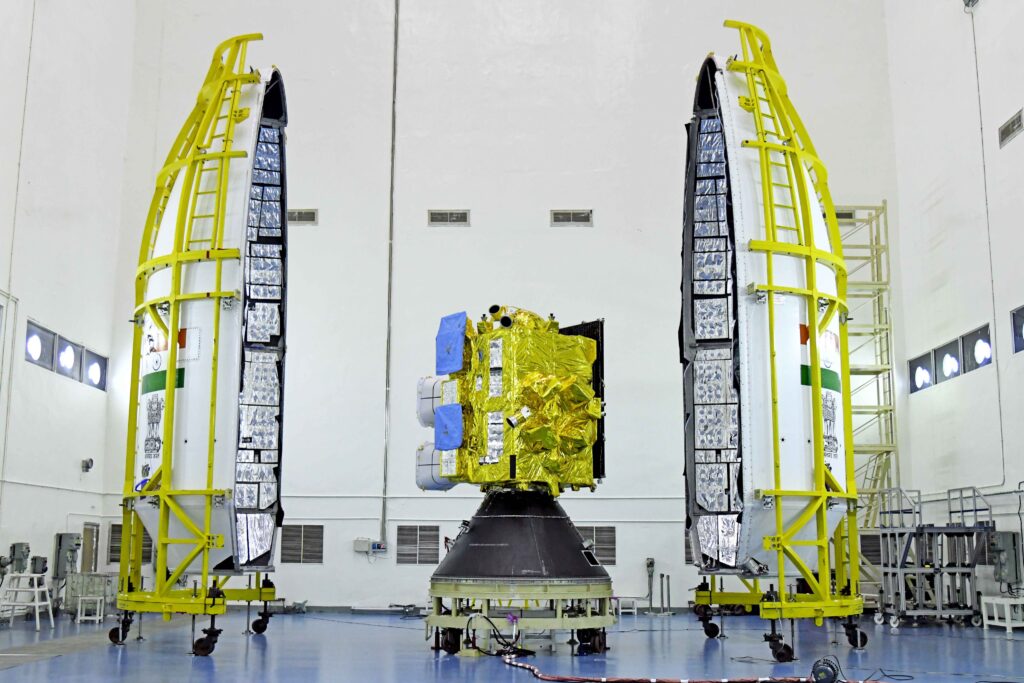On February 17, 2024, GSLV-F14 rocket is scheduled to launch from the Satish Dhawan Space Centre (SDSC-SHAR), located in Sriharikota.

In order to improve the nation’s meteorological capabilities, the Indian Space Research Organization (ISRO) is preparing for the impending launch of the INSAT-3DS satellite.
The powerful Geosynchronous Satellite Launch Vehicle, or GSLV-F14, will carry the satellite into orbit.
On February 17, 2024, this heavy-lift rocket is scheduled to launch from the Satish Dhawan Space Centre (SDSC-SHAR), Sriharikota, marking a significant milestone in India’s space exploration efforts.
Read more: CERN is training robot dogs to spot radiation hazards at Large Hadron Collider
What is GSLV-F14?
The GSLV-F14, which is 51.7 meters tall and has a massive liftoff mass of 420 tonnes, is a shining example of India’s engineering excellence in the aerospace industry.
With a three-stage propulsion system, it is a modern rocketry marvel. Four strap-on stages, each carrying 40 tons of earth-storable liquid propellant, accompany the first stage, GS1, which is propelled by a solid propellant motor with a 139-ton propellant capacity.
GS2, the second stage, adds another 40 tons of earth-storable propellant to the voyage. With 15 tons of liquid oxygen and hydrogen aboard, the third stage, or GS3, is a cryogenic powerhouse that provides the last push to orbit.
The INSAT-3DS satellite, the GSLV-F14’s priceless cargo, will be protected by an Ogive payload fairing as it rises through the atmosphere.

GSLV-F14 MISSION: WHY IS IT IMPORTANT?
This mission is a significant advancement in environmental monitoring and meteorological observation, not just another launch.
The INSAT-3DS, a follow-on mission from the Third Generation Meteorological Satellite series, is fully funded by the Ministry of Earth Sciences (MoES) and is expected to improve weather forecasting and disaster warning capabilities.
After going live, INSAT-3DS will supply vital data for meteorological services alongside its forerunners, INSAT-3D and INSAT-3DR. The sophisticated instruments on the satellite are intended to monitor the Earth’s surface and oceans, providing meteorologists with vital information on a variety of spectral channels.
The satellite’s creation was made possible by the cooperative efforts of Indian companies, demonstrating the nation’s increasing technological independence in space.


1 thought on “GSLV-F14: All about the powerful rocket set to launch ISRO’s INSAT-3DS to space”